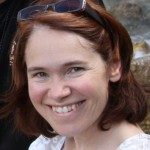Link to Pubmed [PMID] – 26017039
J. Antimicrob. Chemother. 2015 Sep;70(9):2556-65
OBJECTIVES: MDR Candida strains are emerging. Next-generation sequencing (NGS), which enables extensive and deep genome analysis, was used to investigate echinocandin and azole resistance in clinical Candida isolates.
METHODS: Six genes commonly involved in antifungal resistance (ERG11, ERG3, TAC1, CgPDR1, FKS1 and FKS2) were analysed using NGS in 40 Candida isolates (18 Candida albicans, 15 Candida glabrata and 7 Candida parapsilosis). The strategy was validated using strains with known sequences. Then, 8 clinical strains displaying antifungal resistance and 23 sequential isolates collected from 10 patients receiving antifungal therapy were analysed.
RESULTS: A total of 391 SNPs were detected, among which 6 coding SNPs were reported for the first time. Novel genetic alterations were detected in both azole and echinocandin resistance genes. A C. glabrata strain, which was resistant to echinocandins but highly susceptible to azoles, harboured an FKS2 S663P mutation plus a novel presumed loss-of-function CgPDR1 mutation. This isolate was from a patient with deep-seated and urinary candidiasis. Another C. glabrata isolate, with an MDR phenotype, carried a new FKS2 S663A mutation and a new putative gain-of-function CgPDR1 mutation (T370I); this isolate showed mutated (80%) and WT (20%) populations and was collected after 75 days of exposure to caspofungin from a patient who underwent complicated abdominal surgery.
CONCLUSIONS: This study shows that NGS can be used for extensive assessment of genetic mutations involved in antifungal resistance. This type of wide genome approach will become very valuable for detecting mechanisms of resistance in clinical strains subjected to multidrug pressure.


